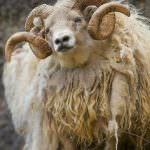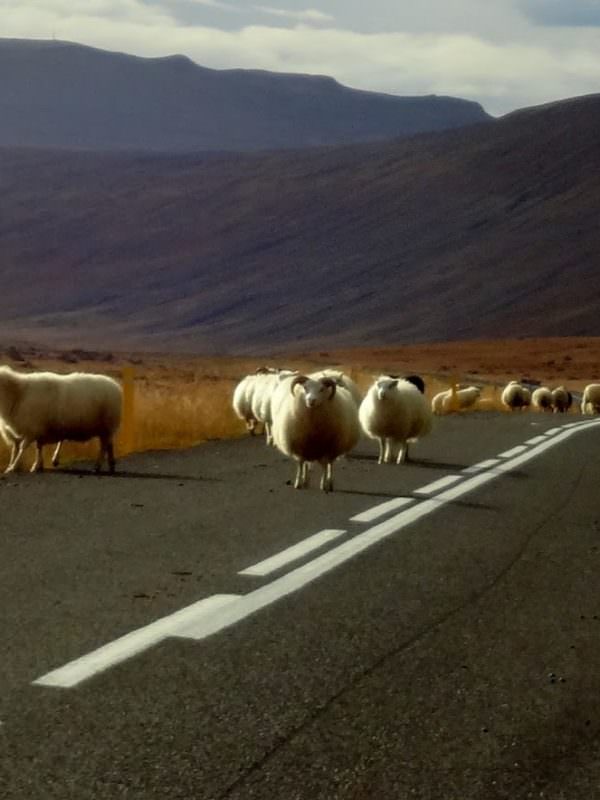In May the lambs are born, stay for one or two weeks at the farm, and then the gates are opened! The Icelandic sheep goes wherever she wants with her offspring the whole summer. Nothing stops her. She goes up and down mountains and valleys, crosses rivers and bridges, and is very difficult to catch. The benefit is that the lambs eat wild plants and grass, which is why the lamb meat is sosucculent. This is why travelers in Iceland can expect to see sheep and lambs almost everywhere they travel.
When driving on Icelandic roads it is important to be watchful and cautious when you approach sheep close to the road, especially when you discover that the mother sheep is on one side of the road and her lambs are on the other. One will probably run over the road just before you pass them. Quite a number of lambs are killed this way every summer.
Sheep with horns are rams, right?
No, that‘s not the case. Sheep can be divided into two groups: those with horns (Icelandic: hyrnd) and then those with no horns (Icelandic: kollótt). Travelers normally don‘t see the rams because they‘re kept at the farms, often in a group of 5-10. You know them by their bold and strong face and they‘re bigger than the females. And they also either have horns or not.

A ram

